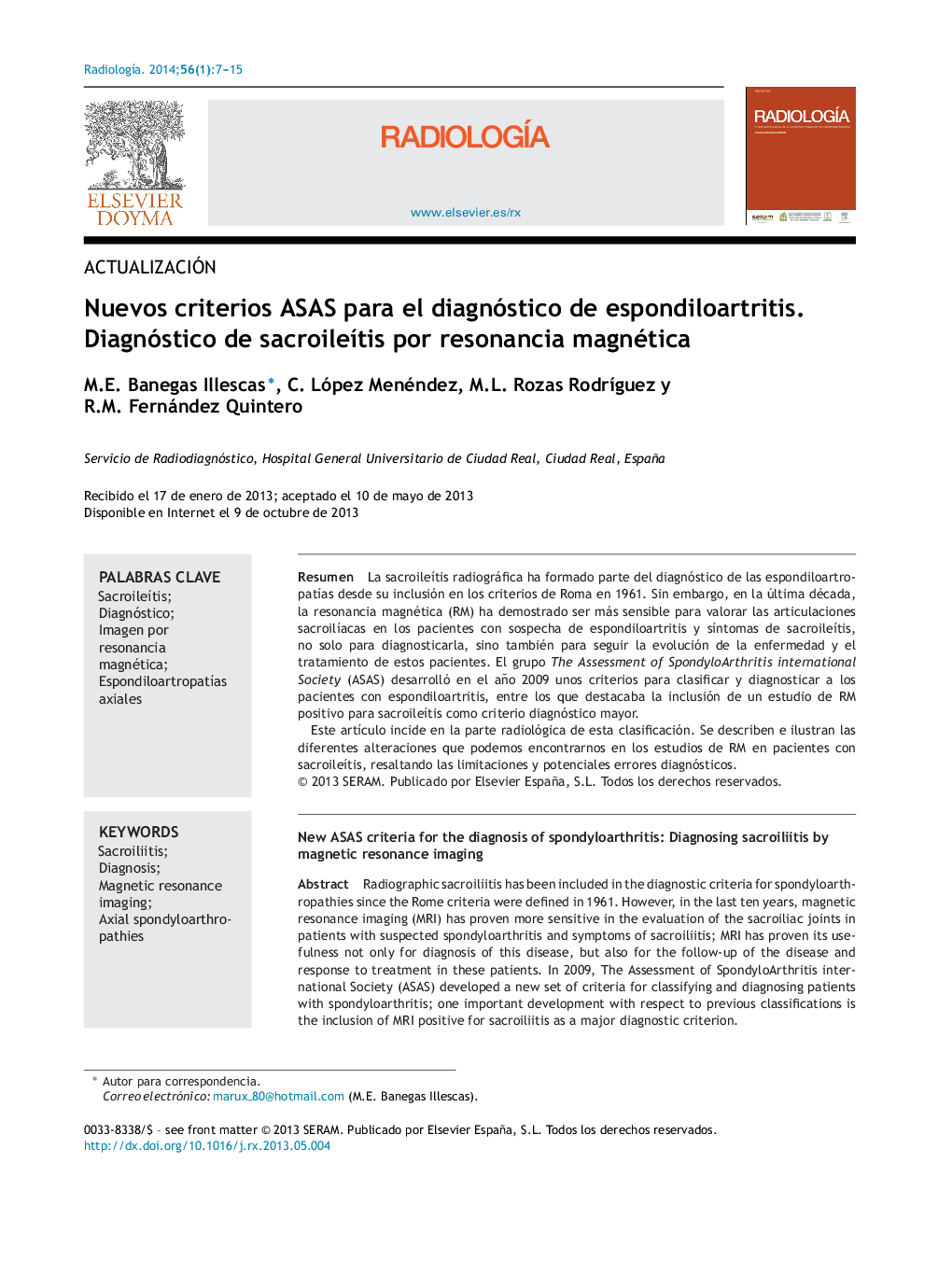| Article ID | Journal | Published Year | Pages | File Type |
|---|---|---|---|---|
| 4245324 | Radiología | 2014 | 9 Pages |
ResumenLa sacroileítis radiográfica ha formado parte del diagnóstico de las espondiloartropatías desde su inclusión en los criterios de Roma en 1961. Sin embargo, en la última década, la resonancia magnética (RM) ha demostrado ser más sensible para valorar las articulaciones sacroilíacas en los pacientes con sospecha de espondiloartritis y síntomas de sacroileítis, no solo para diagnosticarla, sino también para seguir la evolución de la enfermedad y el tratamiento de estos pacientes. El grupo The Assessment of SpondyloArthritis international Society (ASAS) desarrolló en el año 2009 unos criterios para clasificar y diagnosticar a los pacientes con espondiloartritis, entre los que destacaba la inclusión de un estudio de RM positivo para sacroileítis como criterio diagnóstico mayor.Este artículo incide en la parte radiológica de esta clasificación. Se describen e ilustran las diferentes alteraciones que podemos encontrarnos en los estudios de RM en pacientes con sacroileítis, resaltando las limitaciones y potenciales errores diagnósticos.
Radiographic sacroiliitis has been included in the diagnostic criteria for spondyloarthropathies since the Rome criteria were defined in 1961. However, in the last ten years, magnetic resonance imaging (MRI) has proven more sensitive in the evaluation of the sacroiliac joints in patients with suspected spondyloarthritis and symptoms of sacroiliitis; MRI has proven its usefulness not only for diagnosis of this disease, but also for the follow-up of the disease and response to treatment in these patients. In 2009, The Assessment of SpondyloArthritis international Society (ASAS) developed a new set of criteria for classifying and diagnosing patients with spondyloarthritis; one important development with respect to previous classifications is the inclusion of MRI positive for sacroiliitis as a major diagnostic criterion.This article focuses on the radiologic part of the new classification. We describe and illustrate the different alterations that can be seen on MRI in patients with sacroiliitis, pointing out the limitations of the technique and diagnostic pitfalls.
